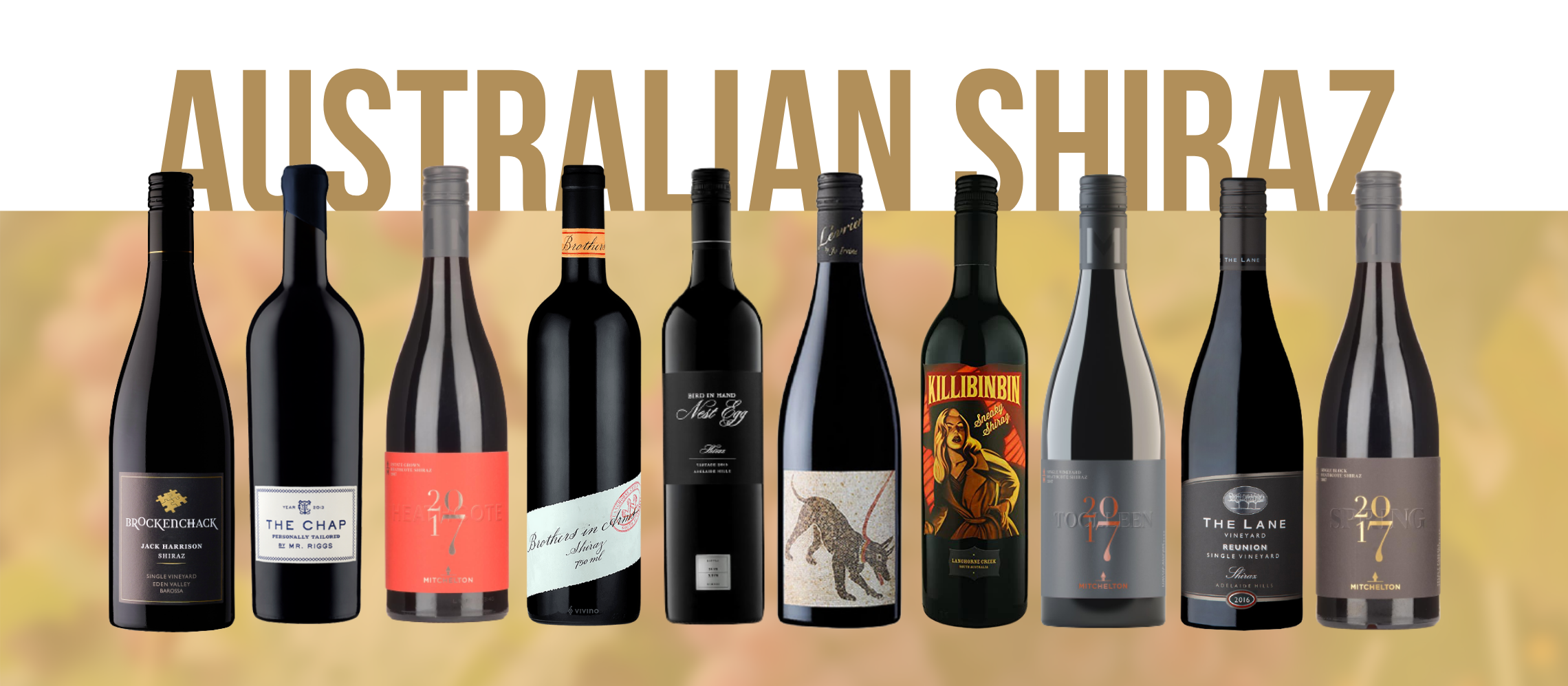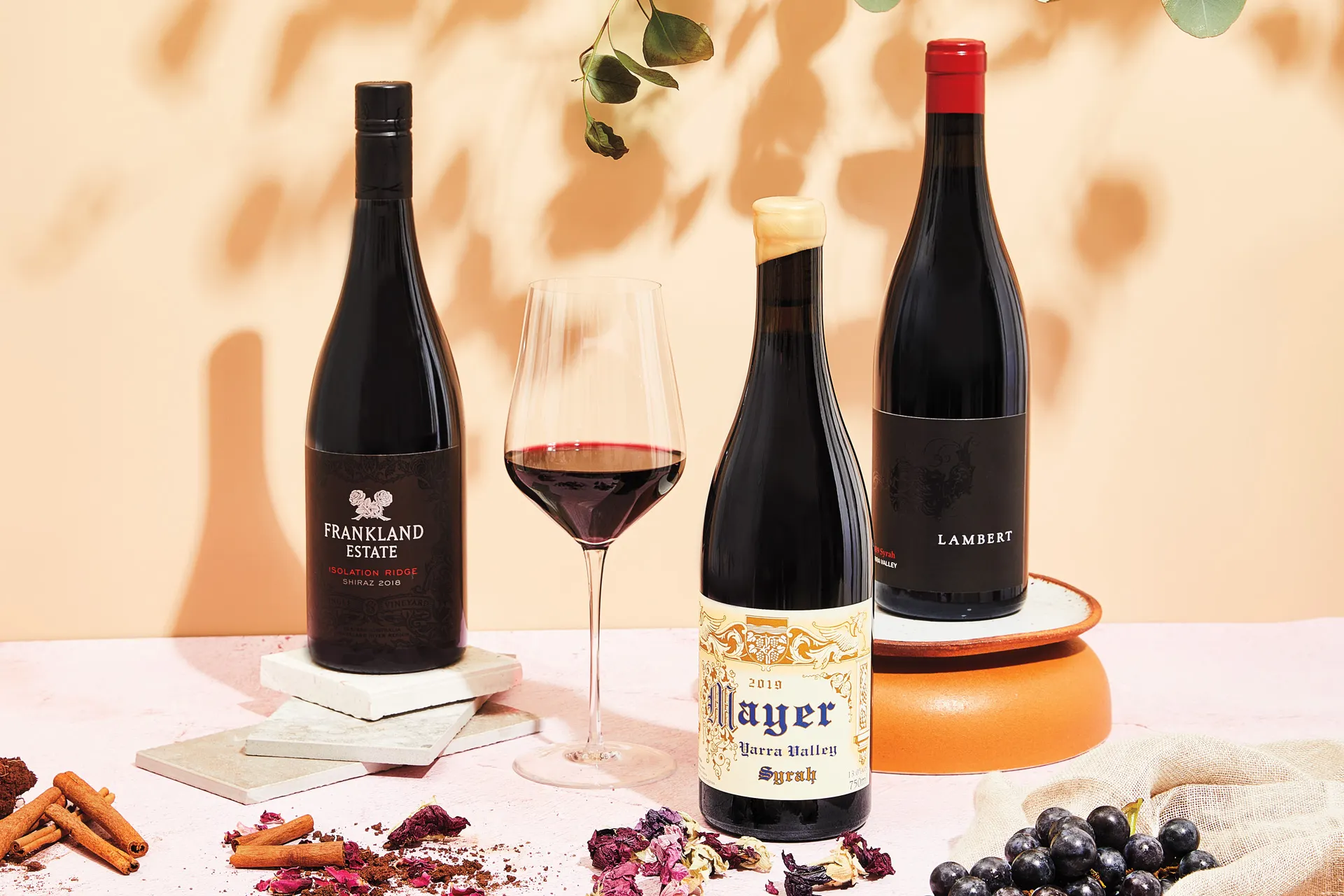Few wines capture the spirit of a country quite like Australian Shiraz. With its deep, inky color, bold flavors, and unmistakable richness, Shiraz has become synonymous with Australian winemaking excellence. From the sun-drenched vineyards of Barossa Valley to the historic plots of Hunter Valley, this grape variety has flourished across diverse regions, each adding its own unique twist to the classic Shiraz profile. Over the decades, Australian Shiraz has evolved from a local favorite to a global powerhouse, celebrated for its versatility, food-friendliness, and sheer drinkability.
But what makes Australian Shiraz truly stand out? Is it the robust notes of blackberry, plum, and pepper that dance on the palate, or the subtle hints of chocolate, earth, and spice that linger on the finish? Perhaps it’s the way Shiraz effortlessly bridges the gap between tradition and innovation, offering styles that range from opulent and fruit-forward to restrained and elegant. Today, Australian Shiraz is not just a wine; it’s an experience—one that invites both newcomers and seasoned enthusiasts to explore its depth, diversity, and bold character.
Whether you’re uncorking a bottle for a cozy dinner or adding a prized vintage to your cellar, Australian Shiraz promises a journey of flavor and discovery. In this blog, we’ll explore the origins, regional expressions, tasting notes, and perfect food pairings that define this iconic wine, revealing why it remains a favorite among wine lovers worldwide.
The Origins and Evolution of Australian Shiraz

Shiraz, known as Syrah in France’s Rhône Valley, made its way to Australia in 1832 as part of the Busby collection, a selection of grapevines that laid the foundation for the country’s wine industry. The first Shiraz vines were planted in the Hunter Valley, and some of these original vines still thrive today, forming part of the world’s oldest collection of old-vine Shiraz. Over time, Shiraz spread across Australia’s varied climates, adapting and evolving to produce a spectrum of styles that reflect both regional terroir and winemaking innovation.
While Shiraz and Syrah are technically the same grape, the difference in naming often signals a difference in style. In Australia, “Shiraz” typically denotes a bold, fruit-driven wine with higher alcohol content, shaped by the country’s generally warmer climate. In contrast, wines labeled as “Syrah” often come from cooler regions and tend to be more restrained, aromatic, and reminiscent of their French counterparts. This duality has allowed Australian winemakers to experiment and diversify, resulting in a range of Shiraz wines that cater to every palate.
Flavor Profile: What Makes Australian Shiraz Bold and Full of Flavor?
Australian Shiraz is celebrated for its intense, expressive flavors. Common tasting notes include:
-
Dark fruits: Blackberry, plum, cherry, and black currant provide a luscious, juicy foundation.
-
Spice: Black pepper, licorice, and clove add complexity and a signature kick.
-
Oak influence: Vanilla, coconut, mocha, and chocolate often come from oak aging, enhancing richness.
-
Earthy undertones: Hints of leather, tobacco, and eucalyptus reflect the influence of specific regions and older vines.
The result is a wine that balances sweet and savory elements, offering both immediate appeal and potential for complexity with age. As Shiraz matures, its tannins soften, and earthy, port-like qualities can emerge, making it a rewarding choice for cellaring.
Australian Shiraz is typically full-bodied, with a velvety mouthfeel and robust tannins that provide structure and longevity. The best examples achieve a harmonious balance between fruit intensity, acidity, and tannin, ensuring both power and elegance in every sip.
Regional Diversity: Exploring Australia’s Shiraz Heartlands

Australia’s vast world gives rise to distinct regional expressions of Shiraz, each with its own character and style. Here’s a look at some of the most important Shiraz-producing regions:
-
Barossa Valley: Warm climate. Produces full-bodied Shiraz with rich, dark fruit flavors, chocolate, spice, and higher alcohol levels.
-
McLaren Vale: Mediterranean climate. Known for full-bodied Shiraz with blueberry, chocolate, savory, and floral notes.
-
Hunter Valley: Warm and humid climate. Offers medium-bodied Shiraz with red fruit, earthy, and savory flavors, and lighter tannins.
-
Clare Valley: Warm days and cool nights. Produces full-bodied Shiraz with blackberry, cherry, plum, and licorice notes.
-
Eden Valley: Cool, high-altitude climate. Shiraz here is medium to full-bodied with blackberry, sage, pepper, and aromatic qualities.
-
Heathcote: Continental climate. Known for medium to full-bodied Shiraz with dark fruit, spice, and minerality.
-
Yarra Valley: Cool climate. Produces elegant, floral, peppery, and restrained Shiraz with a medium body.
Each region puts its own spin on Shiraz, from the opulent, fruit-forward wines of Barossa to the savory, peppery, and elegant styles of cooler areas like Yarra Valley and Adelaide Hills.
Food Pairings: Bringing Out the Best in Shiraz
The bold flavors and robust structure of Australian Shiraz make it an excellent partner for a wide range of dishes. Here are some top pairing ideas:
-
Red meats: Grilled steak, roast lamb, and beef stew are classic matches, as Shiraz’s tannins and fruit complement the richness of the meat.
-
Barbecue: Smoky, charred flavors from barbecued meats or vegetables pair beautifully with Shiraz’s spicy, fruity character.
-
Aged cheeses: Hard, nutty cheeses like Manchego or Parmesan enhance the wine’s depth and balance its power.
-
Spicy and savory dishes: Shiraz can handle bold flavors, making it a great match for dishes with pepper, bacon, or even spicy sausages.
-
Chocolate desserts: The chocolate and mocha notes in many Shiraz wines make them a surprising but delicious partner for dark chocolate treats.
The versatility of Shiraz means it can lift both everyday meals and special occasions, making it a staple for wine lovers who enjoy experimenting with food and wine pairings.
The Modern Shiraz: Trends and Innovations

While the 1990s saw Australian Shiraz reach global fame for its ripe, powerful, and sometimes high-alcohol “blockbuster” style, today’s winemakers are embracing greater diversity and balance. Many producers are dialing back oak influence, picking grapes earlier for freshness, and exploring whole-bunch fermentation to add complexity and savory notes. This shift has resulted in more medium-bodied, aromatic, and regionally expressive wines, broadening the appeal of Shiraz to new audiences.
Whether you prefer the classic, robust style of Barossa or the refined elegance of cool-climate regions, there’s an Australian Shiraz for every taste and occasion. Its ability to age gracefully and its adaptability to different winemaking techniques ensure that Shiraz will remain a cornerstone of Australian wine for years to come.
Why Australian Shiraz Remains a Global Favorite?
Australian Shiraz stands as a testament to the country’s winemaking prowess, offering a dazzling array of styles that showcase both the grape’s inherent power and the unique character of Australia’s diverse regions. Its bold flavors, versatility, and consistent quality have earned it a place among the world’s most celebrated wines. Whether you’re a seasoned collector or a curious newcomer, exploring Australian Shiraz is an invitation to discover the richness, complexity, and vibrant spirit of Australian wine.


